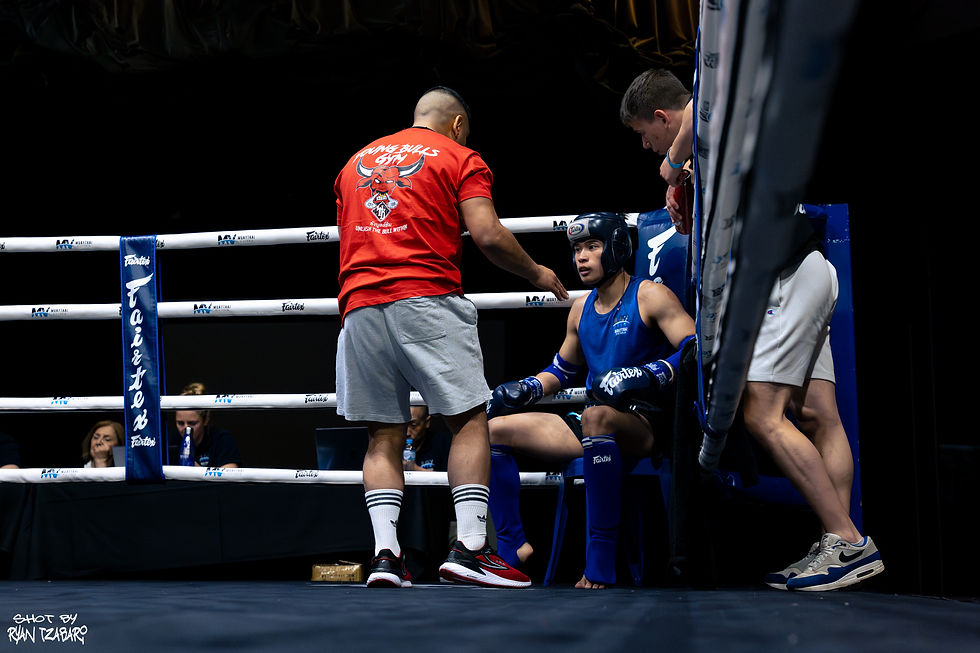Tuning Into the Sounds of a Muay Thai Fight
- Albert Xavier
- Aug 15
- 3 min read
Step into a Muay Thai gym or arena, and your senses are immediately assaulted. The heat, the smell of liniment, the dazzling lights... but above all, the sounds. Beyond the roar of the crowd and the thud of impact, there’s an intricate, almost ritualistic soundscape that defines a Muay Thai fight. It's an unseen symphony, and learning to tune into it can deepen your appreciation for the art of eight limbs.
The Hypnotic Pulse: The Sarama Music
The most distinctive and culturally rich sound of a Muay Thai fight is undoubtedly the traditional Thai music, known as Sarama. As soon as the first notes hit, you know you're in for a spectacle.
Typically played by a small ensemble, the Sarama features:
Pee Java (Javanese Oboe): Its reedy, piercing melody weaves through the air, often leading the tempo and rhythm.
Klong Kaek (Thai Drum): Providing the driving beat, the drums dictate the pace and energy of the fight. As the intensity builds, so too does the drumming.
Ching (Cymbals): The crisp, sharp ching sound adds a metallic punctuation, marking the end of phrases and emphasizing moments of impact.
This isn't just background music; it's an integral part of the fight itself. The Sarama builds in intensity throughout the rounds, urging the fighters on, and guiding the crowd's energy. Listen closely, and you'll hear how the musicians respond to the action in the ring, quickening the tempo during flurries and slowing it down during clinches. It's almost as if the music is another fighter, influencing the flow of the bout.
The Percussive Language: Sounds of Impact
Beyond the music, the fight itself has its own percussive language.
The Thud of the Shin: There's nothing quite like the deep, satisfying thud of a perfectly landed Muay Thai roundhouse kick connecting with a pad, a heavy bag, or even an opponent's body. It's a testament to the power generated and the conditioning of the shins.
The Slap of the Palm: When a trainer catches a powerful kick on the pads, you hear the sharp, resonant slap. This isn't just a sound; it's feedback – a clear indication of a well-executed kick.
The Pop of the Punch: While perhaps not as iconic as the kick, a crisp jab or cross makes a distinct pop as it lands, especially if it finds its mark on the chin or forehead.
The Crunch of the Clinch: Inside the clinch, you might hear the grunts and heavy breathing of two bodies battling for position, interspersed with the smack of knees to the body and the sharp crack of elbows as they connect.
The Roar of the Crowd: This one is universal, but in Muay Thai, the crowd's reaction can be particularly visceral. A collective gasp for a near-knockout, a sustained roar for a flurry of techniques, or rhythmic chants of encouragement.
The Trainer's Voice: Guidance from the Corner
Listen closely, and you'll often pick up the sharp, urgent commands from the trainers in the corner. In Thailand, these are typically in rapid-fire Thai, urging their fighter to "teep," "kick," "knee," or "block." Even if you don't understand the language, the tone conveys the message – a constant stream of strategic advice and motivation. For local Australian fights, you'll hear the same focused guidance, often equally intense.

The Bell: The Start and End
And finally, the bell. Its insistent ring marks the start and end of each round, a clear punctuation in the fight's narrative. It's a signal to push, to hold, or to recover, bringing order to the chaos.








Comments